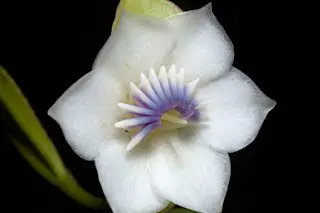Plants, they're just like us.
We begin our lives as, really, parasites. A baby may bring some joy into the world, but it's not contributing much beyond that. It takes feeding, cleaning, protecting, teaching and money to polish a human being into something approaching societal worth.
After all, David Attenborough wouldn't have been Sir David Attenborough without Frederick and Mary.
Blakea attenboroughi shares at least one thing with its namesake — they both needed a bit of help to get off the ground. Or, in the case of this flowering shrub from Ecuador, to reach the ground. Attenborough's flowering shrub from Ecuador (OK, there's not really a name for them) is a hemiepiphyte, which is a fancy name for a freeloader.
True epiphytes are plants that live their entire existence attached to other plants. This includes most mosses and orchids; plants that do not root themselves in soil but instead ...














